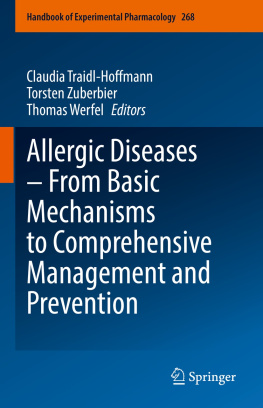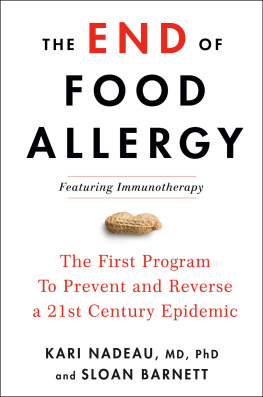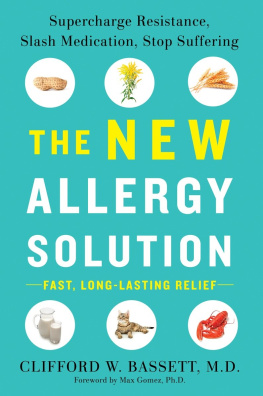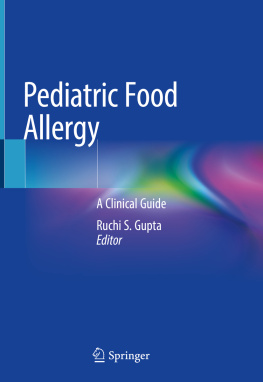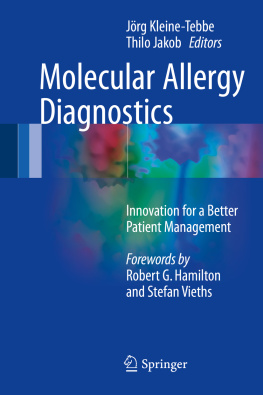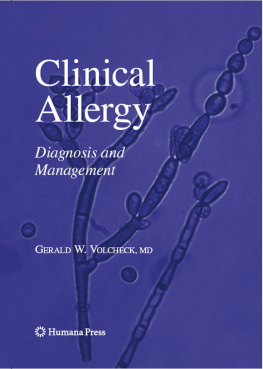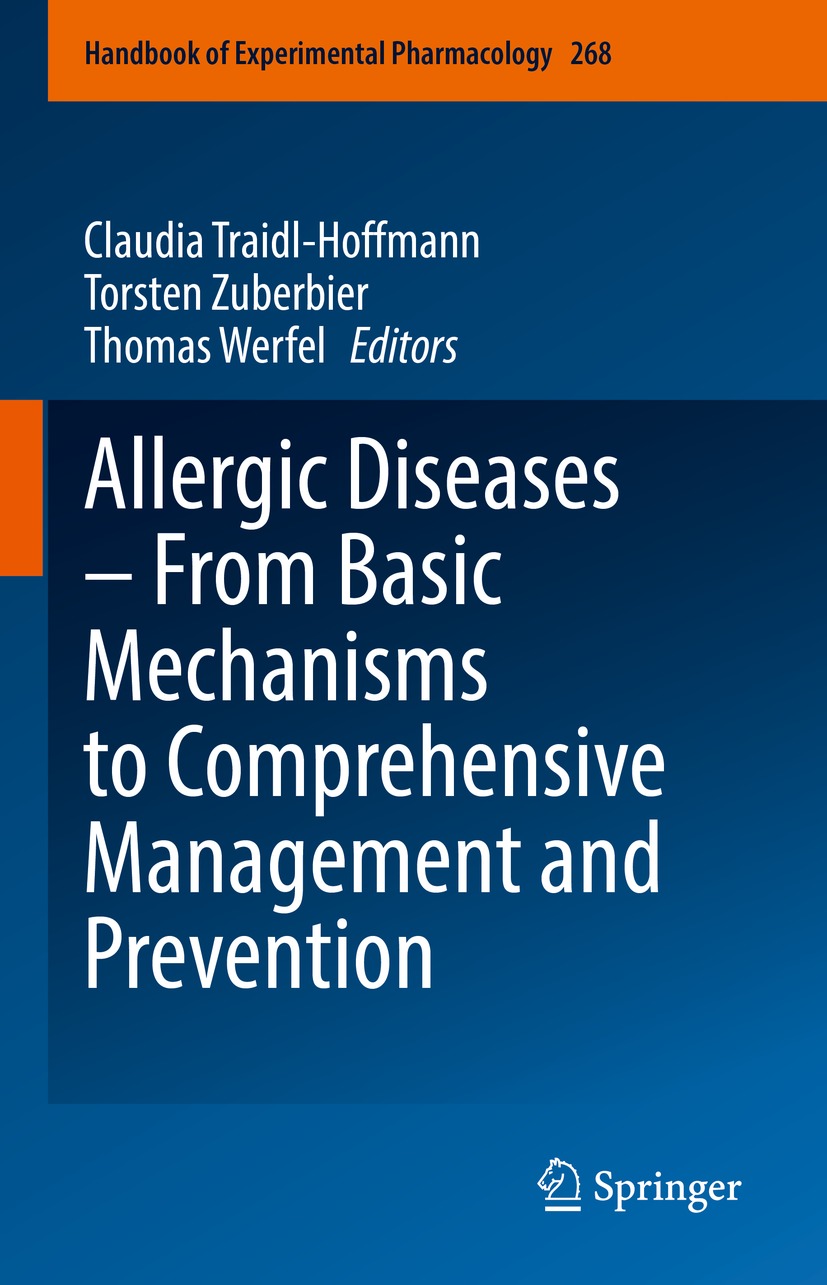Volume 268
Handbook of Experimental Pharmacology
Editor-in-Chief
James E. Barrett
Center for Substance Abuse Research, Lewis Katz School of Medicine at Temple University, Philadelphia, PA, USA
Editorial Board
Veit Flockerzi
Institute for Experimental and Clinical Pharmacology and Toxicology, Saarland University, Homburg, Germany
Michael A. Frohman
Center for Developmental Genetics, Stony Brook University, Stony Brook, NY, USA
Pierangelo Geppetti
Headache Center, University of Florence, Florence, Italy
Franz B. Hofmann
Forschergruppe 923 Carvas, Technical University, Mnchen, Germany
Rohini Kuner
Institute of Pharmacology, Heidelberg University, Heidelberg, Germany
Martin C. Michel
Department of Pharmacology, University of Mainz, Mainz, Germany
Clive P. Page
SIPP, Kings College London, London, UK
KeWei Wang
School of Pharmacy, Qingdao University, Qingdao, China
The Handbook of Experimental Pharmacology is one of the most authoritative and influential book series in pharmacology. It provides critical and comprehensive discussions of the most significant areas of pharmacological research, written by leading international authorities. Each volume in the series represents the most informative and contemporary account of its subject available, making it an unrivalled reference source.
HEP is indexed in PubMed and Scopus.
More information about this series at http://www.springer.com/series/164
Editors
Claudia Traidl-Hoffmann , Torsten Zuberbier and Thomas Werfel
Allergic Diseases From Basic Mechanisms to Comprehensive Management and Prevention
1st ed. 2022

Logo of the publisher
Editors
Claudia Traidl-Hoffmann
Department of Environmental Medicine, University Augsburg, Medical Faculty, Augsburg, Germany
Torsten Zuberbier
Charit - Universittsmedizin Berlin, Klinik fr Dermatologie, Berlin, Berlin, Germany
Thomas Werfel
Division of Immunodermatology and Allergy Research, Department of Dermatology and Allergy, Hannover Medical School, Hanover, Germany
ISSN 0171-2004 e-ISSN 1865-0325
Handbook of Experimental Pharmacology
ISBN 978-3-030-84047-1 e-ISBN 978-3-030-84048-8
https://doi.org/10.1007/978-3-030-84048-8
Springer Nature Switzerland AG 2022
This work is subject to copyright. All rights are reserved by the Publisher, whether the whole or part of the material is concerned, specifically the rights of translation, reprinting, reuse of illustrations, recitation, broadcasting, reproduction on microfilms or in any other physical way, and transmission or information storage and retrieval, electronic adaptation, computer software, or by similar or dissimilar methodology now known or hereafter developed.
The use of general descriptive names, registered names, trademarks, service marks, etc. in this publication does not imply, even in the absence of a specific statement, that such names are exempt from the relevant protective laws and regulations and therefore free for general use.
The publisher, the authors and the editors are safe to assume that the advice and information in this book are believed to be true and accurate at the date of publication. Neither the publisher nor the authors or the editors give a warranty, expressed or implied, with respect to the material contained herein or for any errors or omissions that may have been made. The publisher remains neutral with regard to jurisdictional claims in published maps and institutional affiliations.
This Springer imprint is published by the registered company Springer Nature Switzerland AG
The registered company address is: Gewerbestrasse 11, 6330 Cham, Switzerland
Preface
100 million days per year. One can only imagine what could be achieved in that huge amount of time. This is the number of days people with allergies miss at work or in school in Europe within one year, because they do not feel well. Not counting the days when they are physically present, but not quite up to their tasks.
The burden of allergic diseases is high. Not only the symptoms of the diseases itself, such as running and blocked nose, sneezing, itchy skin and others, but also the accompanying impairment in terms of sleeplessness, abandonment of certain activities and food, anxiety of an allergic shock, as well as time-intensive and expensive treatments decrease the quality of life of the patients. Many patients develop mental health issues such as anxiety and depression. Often not only the patients themselves, but also their families suffer under these circumstances.
In 2025, according to estimations, every second inhabitant of the European Union will have to deal with some form of allergy: that makes more than 225 million people. Knowing about the increasing prevalence of allergic diseases, we work for understanding the mechanisms and developing effective prevention and management of allergies. This book aims at providing the current knowledge about allergic diseases to a large number of scientists, practitioners and also the people concerned.
In it, the knowledge and expertise of 65 leading scientists of the field from 8 different countries is brought together to take a close look at all aspects of allergies. What is known about their history, their different forms, the mechanisms of their development, about risk factors, diagnosis, disease management and above all about ways to prevent them are all collected in this single volume. It presents the state of the art and also gives an overview of basic science beyond mere textbook knowledge. It maps what is established as well as what is still to be explored, hopefully in the near future, in order to lighten the burden for all the people suffering and prevent further increases in the prevalence of allergies.
This volume covers large ground.
Part I of this book explains the historical and epidemiological background of allergies. In the chapter on the History of Allergy, Ring starts with the first descriptions of allergy in antiquity, in the Middle Ages and in Renaissance. The chapter continues with the beginnings of allergology in the early 19th century and finally describes the developments in diagnosis, therapy and in understanding the pathophysiological mechanisms of allergic diseases in the 20th century. Genuneit and Standl then summarize our knowledge on the Natural course and risk factors of allergic diseases in the 21st century from an epidemiological perspective.
Although the mechanisms at work when allergies develop or are triggered are not yet fully known at least on the molecular level the chapters of Part II describe some of the general mechanisms that have been identified as important. Knol and Gilles take a close look at the four types of hypersensitivity reactions that underlie the overreacting immune systems and bring this distinction that has been developed more than 60 years ago in line with actual findings. Biedermann et al. concentrate on the barrier function of the skin and stress the importance of its integrity which is protected by complex measures such as wound repair or anti-infective immune reactions. New methods, e.g. new sequencing technologies also offer fascinating new insights. Schwierzeck, Hlpsch and Reiger use these for analyses of various microbiomes. In their article they explain research methods and report findings concerning alterations of the microbiome of the skin, the lung and nasopharynx that correlate with allergic diseases.

